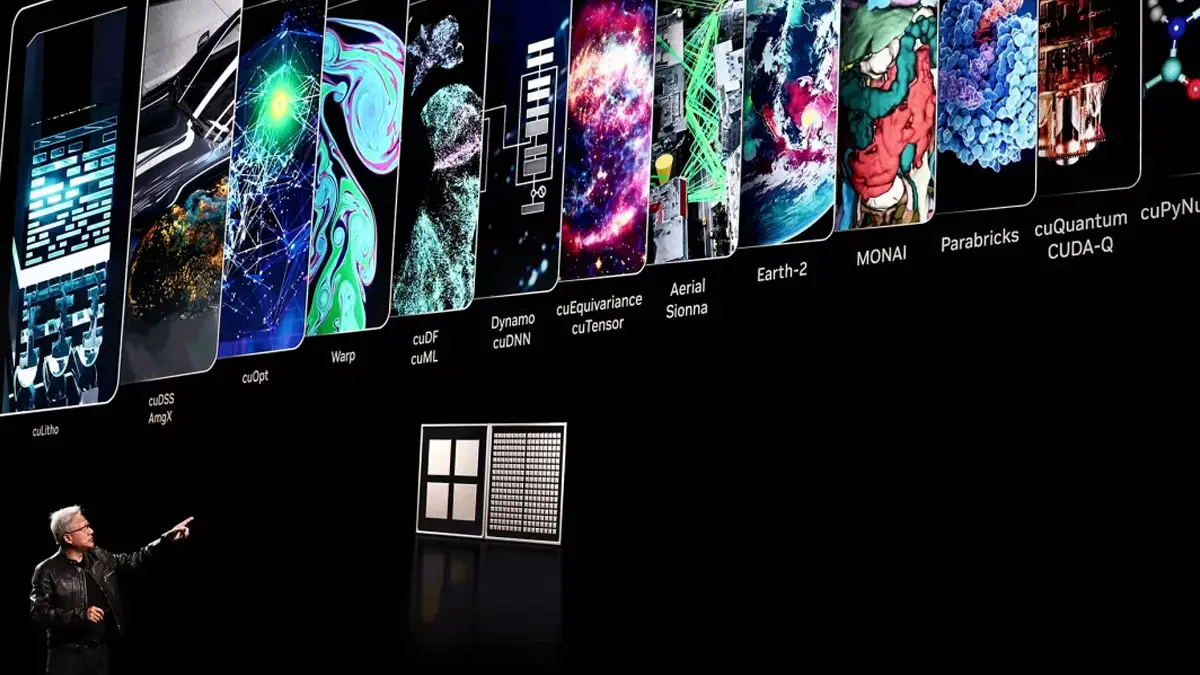In a historic milestone for the tech world, Nvidia has officially become the first publicly traded company to reach a $4 trillion market capitalization, surpassing long-time giants Apple and Microsoft. This groundbreaking achievement underscores Nvidia’s meteoric rise as the undisputed leader in artificial intelligence hardware and infrastructure.
On Wednesday, Nvidia’s stock rose 2.5% at market open, hitting a new intraday record that sent its valuation soaring past the $4 trillion mark. The chipmaker, once primarily known for its gaming GPUs, now sits at the top of the global market leaderboard—a position fueled by its critical role in powering the ongoing AI revolution.
A Meteoric Rise Driven by AI Dominance
Nvidia’s stock performance has been nothing short of extraordinary. So far in 2025, the company’s share price has surged by approximately 20%, following a remarkable 74% rally since April. This momentum is driven by Nvidia’s unmatched grip on the market for AI chips, particularly the graphics processing units (GPUs) and data center accelerators used in training large language models and supporting cloud infrastructure.
Its GPUs power AI-heavy operations for tech behemoths like Microsoft, Google, Amazon, and countless emerging startups. As artificial intelligence becomes the core driver of global digital transformation, Nvidia’s dominance has turned into a financial superpower.
Outpacing Apple and Microsoft
For much of the past year, Apple, Microsoft, and Nvidia have taken turns at the top of the list of most valuable companies. Apple entered 2025 as the world’s most valuable firm with a market cap near $3.9 trillion, but ongoing volatility—partly stemming from renewed U.S.-China trade tensions and tech-sector tariffs introduced by President Donald Trump—has shaved billions off its valuation.
Meanwhile, Microsoft hovered around a $3.77 trillion market cap but fell just short of breaching the $4 trillion ceiling. Nvidia, with its surging AI-driven revenue and bullish investor confidence, surged past both to clinch the title.
Revenue Growth That Mirrors Market Cap
Nvidia’s financials are just as impressive as its valuation. For the fiscal quarter ending in April 2025, Nvidia reported $44.1 billion in revenue, marking a 69% year-over-year increase. This explosive growth is fueled almost entirely by surging demand for its data center chips, particularly those used in AI model training and inference.
The International Data Corporation (IDC) estimates that global AI infrastructure spending will exceed $200 billion by 2028, and analysts agree that Nvidia is well-positioned to capture a dominant share of that market.
Wedbush: Nvidia is the “Foundation of the AI Revolution”
Prominent tech analyst Dan Ives of Wedbush Securities summed up the sentiment best in a recent research note:
“There is one company in the world that is the foundation for the AI Revolution—and that is Nvidia.”
He further called Nvidia’s $4 trillion valuation a “historic moment” not just for the company, but for the broader technology sector, signaling that the next phase of AI growth is already underway and Nvidia is leading the charge.
The Evolution of Nvidia: From Gaming GPUs to AI Superpower
Founded in 1993, Nvidia gained mainstream recognition for its high-performance graphics cards, beloved by PC gamers and used in everything from immersive AAA games to cryptocurrency mining rigs.
But over the past five years, the company has pivoted sharply into AI computing, robotics, and autonomous systems. Its Blackwell architecture, announced earlier this year at Nvidia’s annual developer conference, includes the Blackwell Ultra chip—an upgraded version designed for large-scale AI models with advanced reasoning and autonomy.
With Blackwell Ultra, Nvidia is expanding into robotics, autonomous vehicles, and next-gen industrial applications, cementing its presence in virtually every AI-powered domain.
A Billionaire CEO With Global Influence
Nvidia’s success has propelled CEO Jensen Huang into the ranks of the world’s wealthiest individuals. According to the Bloomberg Billionaires Index, Huang’s net worth hit $140 billion as of July 2025, placing him in the top 10 globally.
His rising profile extends beyond the tech world. Huang has become a close ally of President Trump, participating in key events like the Saudi Arabia tech delegation earlier this year. He is also involved in Project Stargate, a $500 billion federal AI infrastructure program that Trump unveiled in January to expand America’s dominance in emerging technologies.
Roadblocks on the Way to $4 Trillion
Nvidia’s rise hasn’t been without turbulence. In early 2025, Chinese AI startup DeepSeek spooked global markets with a powerful and cost-efficient AI model, sparking fears that Nvidia’s high-end chips might be overkill for future AI needs.
The uncertainty, coupled with U.S. export restrictions on Nvidia’s H20 AI chips to China, caused the company to miss out on $2.5 billion in potential revenue during the April quarter. As a result, Nvidia’s stock dropped by as much as 37% between January and April before rebounding sharply.
Despite these challenges, Huang and investors alike remain confident in the company’s long-term growth trajectory.
AI Will Reshape Every Industry, Says Huang
During Nvidia’s May earnings call, Huang delivered a bullish outlook on AI’s role across the global economy:
“AI is this incredible technology that’s going to transform every industry—from the way we build software to healthcare, financial services, retail, transportation, manufacturing—you name it. We’re at the very beginning of that transformation.”
His vision underscores Nvidia’s position not just as a chipmaker, but as a core enabler of the 21st-century industrial revolution.
What’s Next? A $6 Trillion Milestone?
While $4 trillion is an eye-popping number, some analysts believe Nvidia is just getting started. In a recent note, Loop Capital analysts projected that Nvidia could reach a $6 trillion market cap by 2028, thanks to its near-monopoly on critical AI hardware.
“It may seem fantastic that Nvidia’s fundamentals can continue to amplify from current levels,” wrote analysts Ananda Baruah and Alek Valero, “but Nvidia remains essentially a monopoly for critical tech in the AI sector.”
The only questions now are how fast it can grow—and whether any competitor can catch up.
Can Microsoft and Apple Catch Up?
While Nvidia now holds the crown, the race isn’t over. Microsoft is hot on its heels, currently valued around $3.77 trillion, with deep investments in AI through its partnership with OpenAI, the creators of ChatGPT. Analysts believe it’s only a matter of time before Microsoft also crosses the $4 trillion mark.
Apple, meanwhile, faces a tougher road ahead. Regulatory pressure, geopolitical tensions, and a slower AI rollout have dented investor confidence. However, with strong brand loyalty and a massive ecosystem, Apple should not be counted out.
Conclusion: The AI Gold Rush Has a King—and It’s Nvidia
In just two years, Nvidia has gone from crossing the $1 trillion mark in May 2023 to smashing through $4 trillion in July 2025. That’s a fourfold increase, driven by the global AI boom, strategic leadership, and relentless innovation.
Nvidia is no longer just a chip company—it’s the backbone of AI infrastructure globally. As cloud providers, governments, and enterprises rush to build the future on AI, they’re all building it on Nvidia.
And with AI still in its early innings, this might only be the beginning.
Disclaimer: The content provided on AiTechtonic.com is for informational purposes only and does not constitute financial advice. While we strive for accuracy, we do not guarantee the completeness or reliability of any information discussed. Investing in the stock market involves risk. Always conduct your own research or consult with a qualified financial advisor before making investment decisions. AiTechtonic.com is not liable for any losses incurred.

